This post originally appeared on Stef Cohen’s blog.
Today I checked the Major League Hacking website for the Spring 2016 hackathon schedule. It is seven months until the Spring 2016 season and the Spring 2015 season hasn’t actually ended yet. This isn’t the first time I’ve checked this month.
I hadn’t heard of a hackathon until this past January at a Learn to Code workshop run by my friends, Rob and Nick, at Startup Shell. I managed to do minimal programming during my undergraduate bioengineering degree and found myself desperately in need of strengthening my programming skills.
The hackathons as they were described to me sounded exciting, however it was three months until I finally registered for one. My biggest fear that prevented me from signing up was not being accepted into the community.It’s almost laughable to think about that now.
Multiple friends at Startup Shell founded bitcamp at University of Maryland, so it was a logical first hackathon choice. If anything, I would be supporting the incredible work my friends had put into organizing the event.
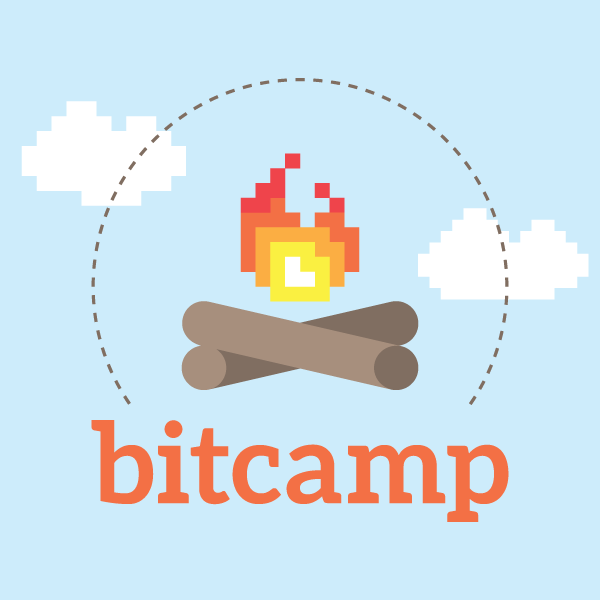
Concurrently, I was playing around with the idea of combining painting with lights to create a dynamic piece of art. I saw it as a last chance attempt to appreciate technology and engineering. At the time, I was struggling with the decision of engineering as my field of study. It was not nearly as artistic and creative as I had imagined it to be. Were the past four years of my life one huge, expensive mistake?
Originally, I imagined this “light painting” project to fill my nights and weekends after work during the summer. A spontaneous stroke of ambition hit me. I can totally do this in 36 hours!
I called my dad immediately. He’s a software engineer with interests in electrical engineering and has always been equally supportive of both my art and engineering interests. We began to research the materials I would need to complete the project.
Friday, April 10th (the first night of bitcamp) rolled around. It had already been a great day. I work at a medical device startup in Baltimore that overlooks the Orioles stadium, and it happened to be Opening Day. The Orioles, however, were not doing so well, so it didn’t pain me to leave the game early to catch the train back to College Park for bitcamp.
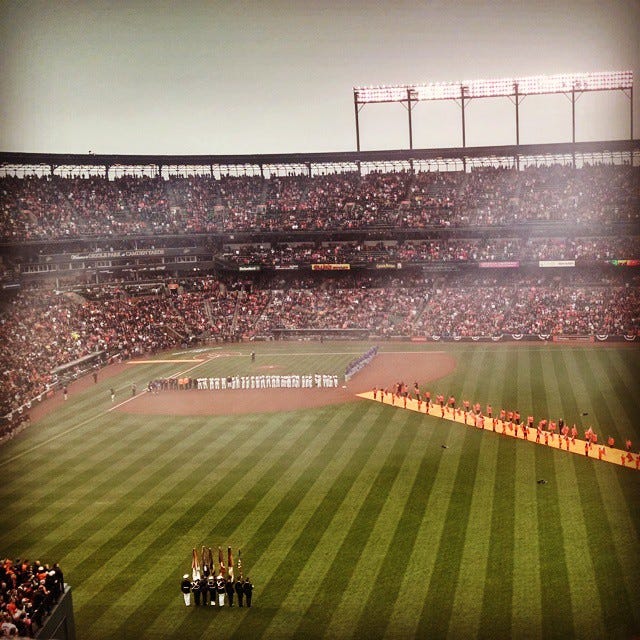
Opening Day festivities as viewed from our conference room.

My boss, Stephen, and fellow interns, Shawn and Luke, crowded around the window. I have been told the best view of the field is from the window in the men’s bathroom. Yet to be confirmed.
There was an air of excitement that could be immediately felt as I walked into Cole Field House. The turf fields could no longer be seen under the rows of tables and what seemed like miles of wires. I was smiling before I had even located any friends or a place to sit. The environment was like nothing I had experienced before. I sat at a table with Startup Shell members and watched a hacker at a nearby table set up three monitors in preparation for the event. I very discretely pulled out my paintbrushes.
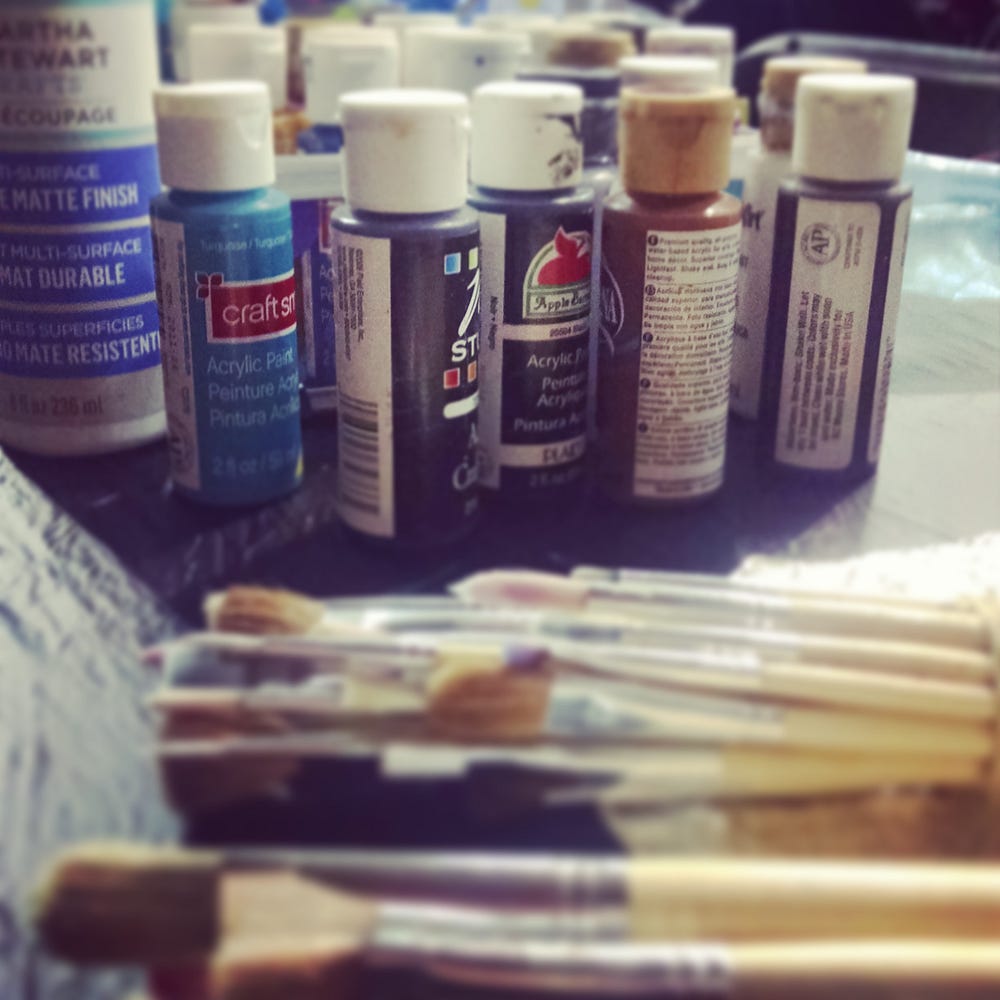
It would be an understatement to say that I got just a few weird looks.
I quickly realized something when the hacking officially began. Aside from a cooler for my friend’s Away Weekend date, I had not seriously painted in over a year. How do I even start?
It took a while to get comfortable with my brush strokes before I began to paint in detail. I reminded myself that if I was brave enough to attempt the unfamiliar electrical component of this project, I could definitely achieve the familiar painting component. The painting came together nicely Friday night.
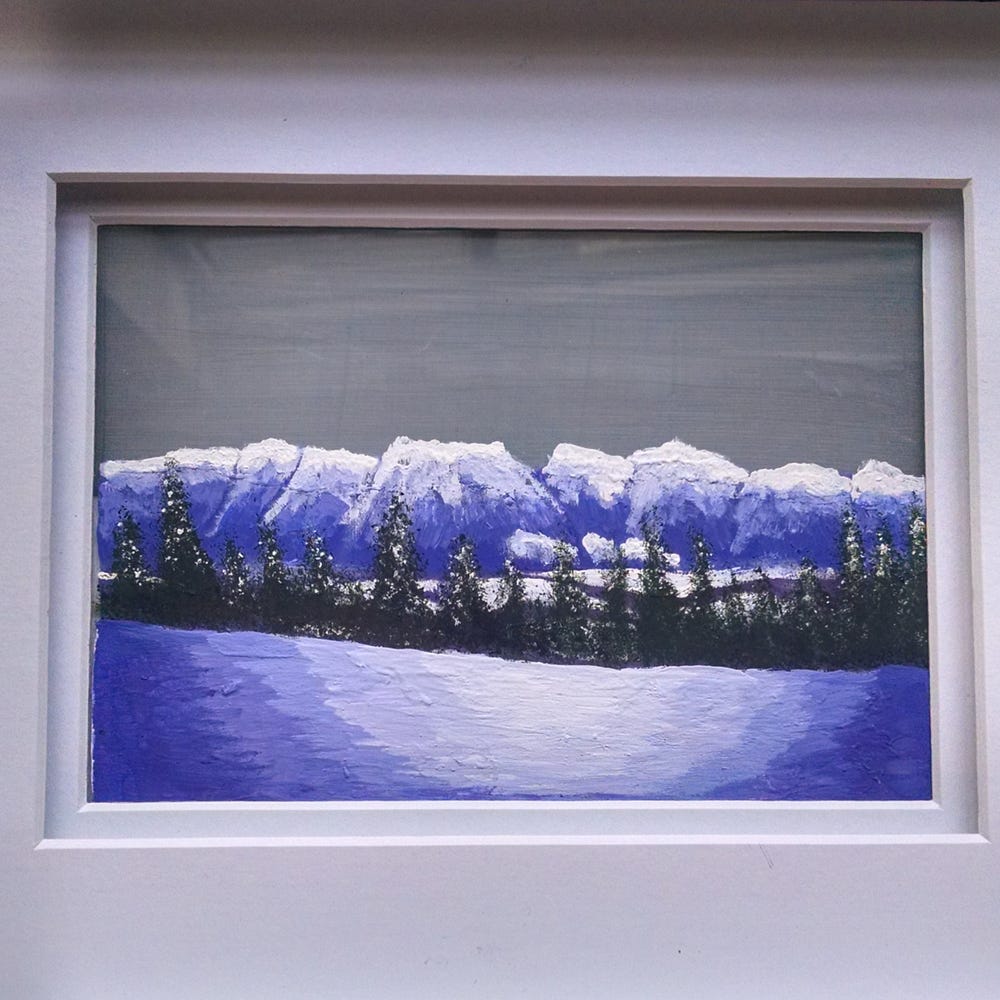

My inspiration. I had recently posted the photo to Instagram with the caption: “I left my heart and sneakers in Boulder, Colorado.” Both were true.
Midnight approached and I had no intentions of sleeping any time soon. It could have been all of the energy and excitement around me. It also could have been that I was conveniently situated next to the Javazen table, which had cold brew flowing from a keg.
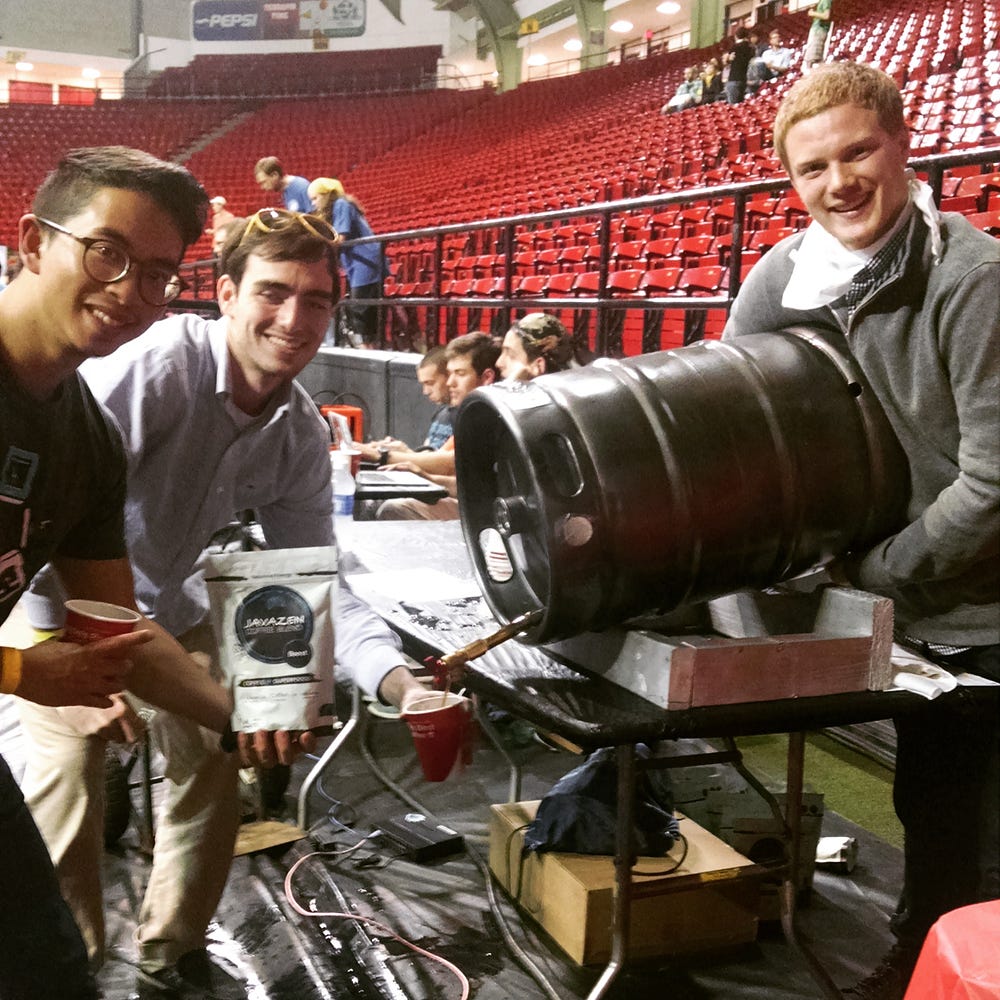
Javazen “fueling the hacks.”

I was wired in every sense of the term.
By 3:30 AM, much of Cole Field House had cleared out. I knew that if I didn’t sleep for at least a few hours the first night, I wouldn’t make it through the rest of the weekend. I was also hugely advocating that anyone who could, go home and take a shower.
I slept from 4–7 AM then returned to Cole Field House at 8 feeling refreshed. I walked past security in the lobby of my apartment building. He made a comment about my wearing sunglasses before exiting the building and how I must have had some crazy night. You could say that. I’m participating in a 36-hour hackathon and have only exposed my eyes to intense fluorescent lighting all night.
Cole Field House was still pretty empty at 8 AM. The atmosphere had taken a 180 degree turn. Hackers were exhausted. The building was silent. I had been documenting the event on Startup Shell’s Instagram account. I decided to start the hashtag, #keephacking, partially as motivation for myself.
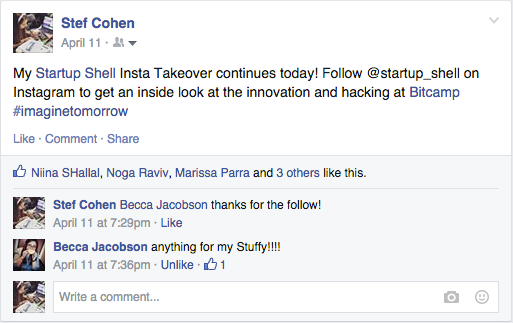
For real though, follow @startup_shell on Instagram. And Twitter. And Facebook. And Medium. Basically all social media.
I remember Saturday as the day I learned more practical skills than any class had taught me. I learned how to properly solder, what a perfboard was, why my computer kept shutting down when I ran my Arduino. As the day went on, I could instantly snap from happy to frustrated to happy again. Part of it might have been that I was still observing Passover until that evening, and food options were slim.
Two students had brought some small dogs into the hackathon. I was annoyed that they were running around so close to my soldering station, however they became a great stress reliever when I realized I had wired my circuit incorrectly. I yelled out “SOMEBODY GET ME A DAMN PUPPY!” and they just put one into my arms. Puppy therapy can be the best therapy.
If you’ve worked with Arduino, you know it can get finicky. Sometimes you just have no clue why your code wont work. At one point, I was so frustrated that without looking up from my laptop I yelled into the crowd, “DOES ANYBODY KNOW ARDUINO?!” Someone right behind me immediately answered, “Yeah, I can help you out!” That’s the type of supportive people you find at a hackathon. I had no reason to think I would not be accepted into the hacking community. Everyone is passionate about what they are doing and are eager to help. It was such a breath of fresh air from the competitive bioengineering environment that I am used to.
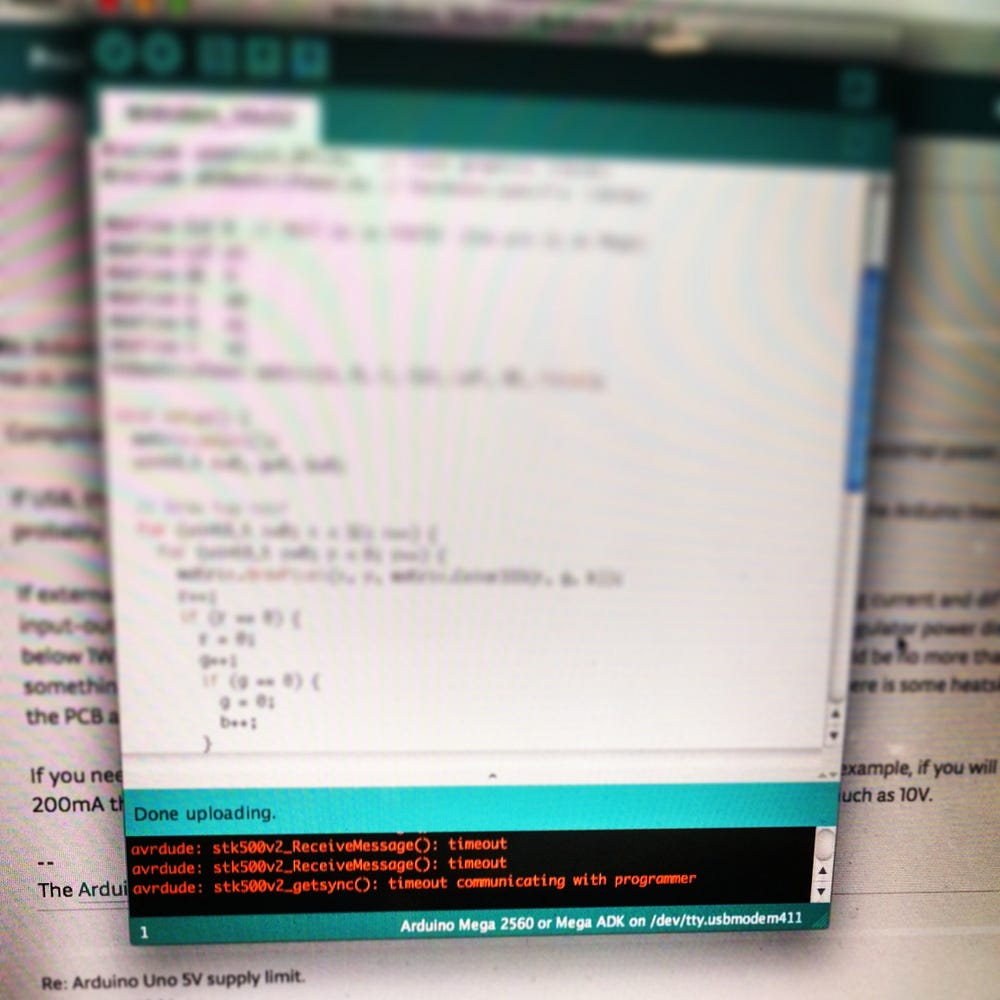
When your compiler’s just like, nah.
There was one very important piece of equipment that I forgot to bring to the hackathon. A power source. At Startup Shell there is a ping pong table that is basically worshipped. A couple members even created an electronic scoreboard. The scoring system was powered by a 7.2V battery pack. Just the power requirement I needed. We called a Shell member who happened to be at Startup Shell and made him do the unthinkable.
“Nick, I need you to go to the ping pong table…. and cut the black wire. NOT THE RED WIRE! The black wire.” — Bogachek
With little context, Nick successfully completely the battery heist. Was it wrong? Maybe. Was it worth it? Hell yeah. The LED board was powered and I was ready to begin designing and programming the sunset. The most intimidating part of the project.

Successfully wired with the help of Bogachek.
Nick has been mentoring me in programming since Winter Workshop, and has always been a great motivator. He stayed with me from Saturday evening through Sunday morning helping me code without giving away any answers.
As a group, the Shell table decided that it wouldn’t be the full hackathon experience unless we pulled an all-nighter. And that is exactly what we did. I wouldn’t have had the motivation to work throughout the night if my Startup Shell family had not been by my side.
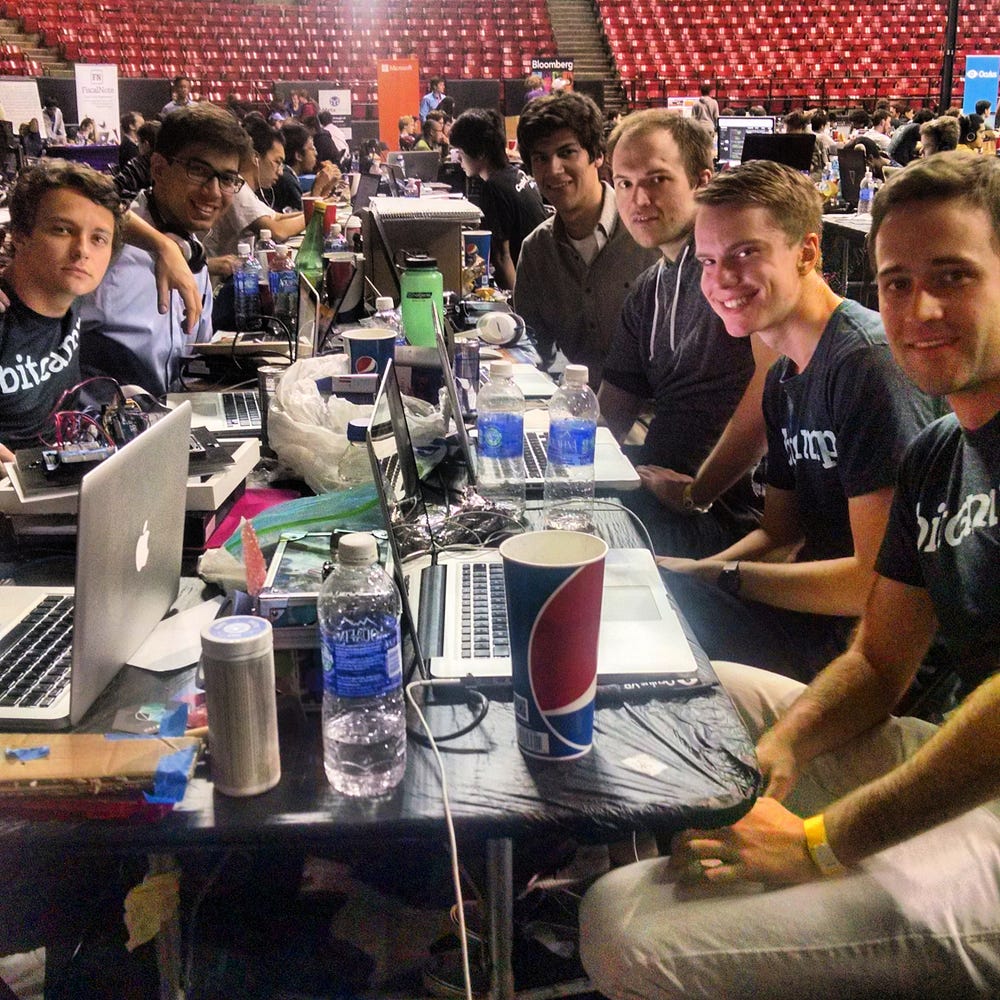
Shellers who bitcamp together sit(camp) together: Bogachek, Ozzie, Josh, Gubbels, Chris, and Mike.
It was hard to keep my eyes open at 6 or 7 AM. The sunset still wasn’t successfully programmed and Nick and I were running out of ideas as to why the code would not work. As I mentioned before, Arduino can be finicky. At 9 AM, one hour before submissions were due, Nick had what I call a stroke of genius (he might disagree) and changed a “false” in the code to “true.”
That was all it took. We made something beautiful. We watched the colors of the sunset fade into each other. Energy rushed back into us. The field house began to fill again. I ran around looking for something to contain the circuitry and came back with a cardboard Philadelphia Cream Cheese box that had been left by catering. We covered the sides with Major League Hacking stickers that we had collected throughout the weekend.

In addition to being the perfect size, the cardboard box is repping greatest city in the country. Because if I haven’t said it a million times already, I’m from Philadelphia.
I was genuinely surprised by the positive feedback I received from fellow hackers and sponsors. I was shocked to see that I was on an MLH Twitter post. The project obviously had a huge impact on myself (I combined my two passions of art and technology), but I wasn’t expecting the impact it had on other people.

MLH Twitter post. The kid behind me is super interested.
I went through a major withdrawal the week after bitcamp. Physically, I had only slept for 3 hours the entire weekend and consumed large amounts of caffeine and potato chips. Some Shellers and I left Cole Field House for a short walk after the event and struggled to adjust our eyes to sunlight. The greater withdrawal was the emotional one. I had the most incredible weekend of creativity, learning, success, and camaraderie. Now it was gone.
After 4 years of feeling like my creative, artistic side was being drained by engineering, I found art in an unlikely place. Or maybe it was the most likely place. I joke that I have a reputation to keep and need to step my “art hack” game up for my next hackathon. However, that joke has been the motivation I needed to keep dreaming up creative ways to combine technology and art. I have plans to learn Python and Javascript this summer by doing small projects in preparation for the “art hacks” that I have planned for next season. I am constantly considering the way art is conventionally viewed and brainstorming how the addition of technology can change that. How can I incorporate the viewer into the creation of a work of art? What about wearable technology? Audio? The possibilities are endless.
What’s next? I’ll probably still be checking the Major League Hacking webpage every month until next season even though I know the schedule won’t be posted for a while. You’ll see me around the country at hackathons in 2016. And hopefully internationally. Just look for the girl with the paint.
I am officially addicted.